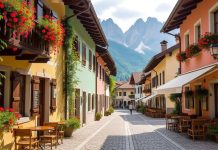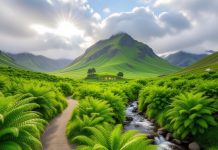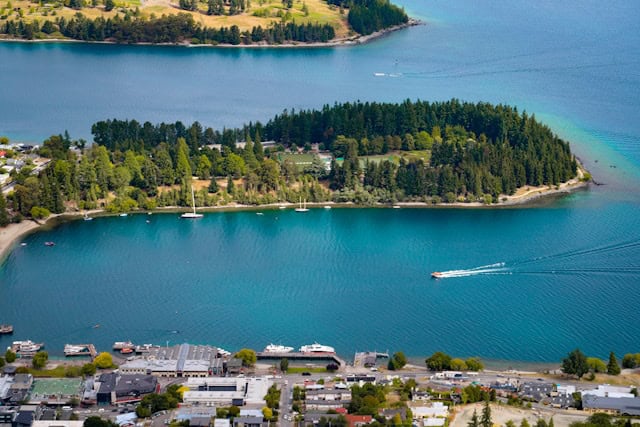The Magic of Fall Foliage in the United States
A Brief Overview of Fall Foliage
Fall foliage, characterized by the vibrant change in colors of deciduous trees, offers one of nature’s most spectacular displays. The phenomenon occurs when trees prepare for winter, reducing chlorophyll production, which allows other pigments, such as carotenoids and anthocyanins, to become visible. This shift results in a kaleidoscope of reds, oranges, yellows, and purples that transforms landscapes into breathtaking vistas.
Peak Viewing Times
The timing of peak fall foliage varies significantly across the United States due to differences in climate, elevation, and tree species. Generally, the show begins in the northern states as early as September, cascading down south through October and into early November. Always check local updates for the most accurate predictions, as weather conditions can markedly alter the timing and intensity of the fall display.
Top Destinations for Fall Foliage Tours
New England’s Classic Beauty
Maine’s Acadia National Park
Located on Maine’s Mount Desert Island, Acadia National Park is a fall foliage enthusiast’s dream. The park offers a mix of rugged coastal scenery and lush forests that burst into color. Ideal spots include Cadillac Mountain, the highest point on the eastern seaboard, where sunrise vistas reign supreme, and the Jordan Pond Path with its reflective waters mirroring the surrounding foliage.
Vermont’s Scenic Byways
Vermont, renowned for its maple trees, boasts some of the most brilliant fall colors in the nation. The Green Mountain Byway, connecting Waterbury and Stowe, provides endless opportunities for leaf-peeping. As you drive, you’ll encounter picturesque villages, charming inns, and local farm stands offering everything from apple cider to freshly baked donuts.
New Hampshire’s White Mountains
In New Hampshire, the Kancamagus Highway, also known as “The Kanc,” is a meandering 34-mile drive through the White Mountains, celebrated for its panoramic views and vibrant fall colors. Don’t miss the Swift River, where the interplay of water and foliage creates stunning photographic opportunities. For a more adventurous perspective, consider hiking the trails of Franconia Notch State Park.
Midwest’s Majestic Displays
Michigan’s Upper Peninsula
The Upper Peninsula of Michigan comes alive with vivid colors in the fall, particularly along the Lake Superior shoreline. Pictured Rocks National Lakeshore presents a dramatic merger of cliffs and colorful foliage, with hiking trails that offer sweeping views. The Tunnel of Trees along M-119 is another must-see, famous for its dense canopy of oaks and aspens.
Wisconsin’s Door County
Door County sits like a thumb jutting into Lake Michigan, offering a wonderful mix of forests, cliffs, and waters that dazzle in the fall. The county excels with options for exploration, including the scenic byway along County Road W and the ferry ride to Washington Island, where you’ll find serene beaches and vibrant trails.
The South’s Warm Hues
North Carolina’s Blue Ridge Parkway
Rolling through the Appalachian Highlands, the Blue Ridge Parkway extends from Virginia to North Carolina and is unparalleled for autumn drives. Highlights include Grandfather Mountain, with its impressive vistas, and the Linville Falls, framed by fiery red and orange leaves. These views, coupled with the crisp mountain air, provide a quintessential fall experience.
Tennessee and Kentucky’s Great Smoky Mountains
Straddling the border of North Carolina and Tennessee, the Great Smoky Mountains boast a diversity of tree species, resulting in a rich tapestry of color. Hiking trails like the Alum Cave Bluffs offer immersive opportunities to view the foliage up close. Clingmans Dome, the highest point in the park, provides a panoramic overlook that is particularly breathtaking during the fall.
Understanding the Science of Fall Colors
The Role of Pigments in Leaves
During the growing season, chlorophyll is the dominant pigment in leaves, providing their green color and facilitating photosynthesis. As days shorten and temperatures cool, trees begin to conserve energy, breaking down chlorophyll and revealing the brilliant hues of carotenoids and anthocyanins. Carotenoids lend yellow and orange tones, while anthocyanins contribute the reds and purples.
Environmental Factors Influencing Color Intensity
Several factors impact the vibrancy of fall foliage, with weather playing a pivotal role. Warm sunny days and cool, but not freezing, nights tend to produce the most vivid colors. Drought and excessive rain can dampen the display, resulting in muted tones or leaves dropping before reaching peak coloration. Delicate balance and timing are crucial for a robust seasonal show.
Essential Tips for Fall Foliage Tour Planning
Choosing the Right Time to Visit
Timing is everything when planning a foliage tour. Use foliage prediction maps and resources provided by local tourism boards to pinpoint the optimal visiting period. Consider visiting slightly ahead of peak to enjoy both the early and prime colors, especially in popular locations that can become crowded during the height of the season.
Selecting the Best Transportation Mode
Driving Tours
Driving remains one of the most flexible ways to enjoy fall foliage. It allows you to travel at your own pace and explore off-the-beaten-path areas that might be inaccessible by other means. Ensure your route includes scenic byways and lookout points where you can safely stop to soak in the views.
Train Rides
Several regions offer scenic train rides that traverse through majestic landscapes, providing a relaxed way of leaf-peeping. Notable routes include the Hobo Railroad in New Hampshire and the Great Smoky Mountains Railroad in North Carolina. These journeys offer a unique vantage point, often through wilderness areas inaccessible by car.
Packing Essentials for a Successful Tour
Weather in fall can be unpredictable, ranging from sunny afternoons to chilly evenings. Layering is key, including a warm sweater, a waterproof jacket, and comfortable walking shoes. Don’t forget your camera or smartphone to capture the breathtaking scenery, and consider packing binoculars for spotting wildlife that becomes more active during the fall.
Making the Most of Your Fall Foliage Tour
Combining Activities for a Full Experience
Hiking and Walking
Integrate hiking or leisurely walks into your itinerary to experience the colors up close. Many national parks and forests feature trails that vary in difficulty, accommodating both casual strollers and seasoned hikers. Trails that parallel rivers or ascend to overlooks often provide the most spectacular views.
Cultural and Harvest Festivals
Autumn is synonymous with harvest season, so complement your foliage tour with visits to local farmers’ markets and festivals celebrating the bounty of the season. These events often showcase regional crafts, foods, and music, providing a deeper cultural understanding of the area. From apple picking in the northeast to wine tasting in California, there’s something for everyone.
Educational Opportunities During Foliage Tours
Many parks and nature reserves offer guided tours and educational programs that explain the science behind fall colors and the ecology of the region. Rangers and naturalists can provide insights about the local flora and fauna, enriching your appreciation of the natural landscape. Engage with these opportunities to learn more about conservation efforts and how climate change may impact future foliage seasons.
Incorporating Overnight Stays for an Unhurried Experience
Choosing the Right Accommodation
Select accommodations that enhance the fall experience. Quaint inns, bed and breakfasts, and rustic cabins often provide cozy atmospheres and personalized hospitality. Consider places with views or easy access to popular foliage spots. Booking a stay in or near national parks can ensure early access to trails and drive routes before the crowds arrive.
Unique Lodging Options
Treehouses and Glamping
For a unique twist, consider staying in a treehouse or a glamping site. Many locations offer luxurious tents or cabins set in the heart of nature, blending comfort with adventure. These options allow you to be immersed in the scenery while enjoying modern amenities.
Creating a Relaxing Itinerary
While it can be tempting to cram as much as possible into your itinerary, allocate time for relaxation and spontaneous exploration. Enjoy quiet mornings with a cup of coffee by a lake or sunset picnics on a grassy hill. These moments of tranquility often become the most cherished memories of a fall foliage tour.
Fall Foliage Photography Tips
Capturing the Vibrancy of the Season
Choosing the Right Equipment
Whether you’re using a DSLR, mirrorless camera, or a smartphone, understanding your equipment is essential for capturing the vivid colors of fall. A polarizing filter can enhance the saturation and reduce glare from leaves, while a tripod can stabilize your camera for sharper images, especially in lower light conditions during early mornings or late afternoons.
Composing the Perfect Shot
Pay attention to composition, incorporating elements like leading lines, reflections, and contrast between colorful trees and structures or water. Experiment with different perspectives and angles, such as low vantage points or looking up through tree canopies, to add depth and interest to your images.
Best Times of Day for Photography
Golden hours, around sunrise and sunset, offer soft, warm lighting that enhances the colors and creates beautiful shadows. Overcast days can also be excellent for photography, as the diffused light brings out the richness in colors without the harsh contrast of direct sunlight.
Maximizing Your Fall Foliage Experience
Connecting with Nature and Community
Participate in local events or volunteer opportunities, such as park clean-ups or guided nature walks. These activities can deepen your connection to the area and foster a community spirit. By engaging with local residents, you gain insights into the cultural significance of the landscape and stories that enrich your travel experience.
Preserving the Beauty of Natural Landscapes
Remember to practice Leave No Trace principles by minimizing your impact on natural areas. Stay on established trails, pack out all trash, and respect wildlife. The beauty of the fall foliage can only continue to inspire future generations if it is preserved and respected by those who visit.































